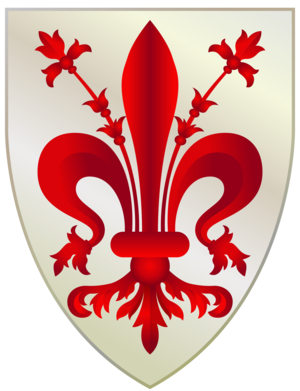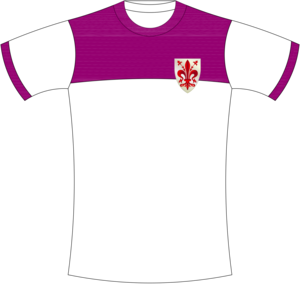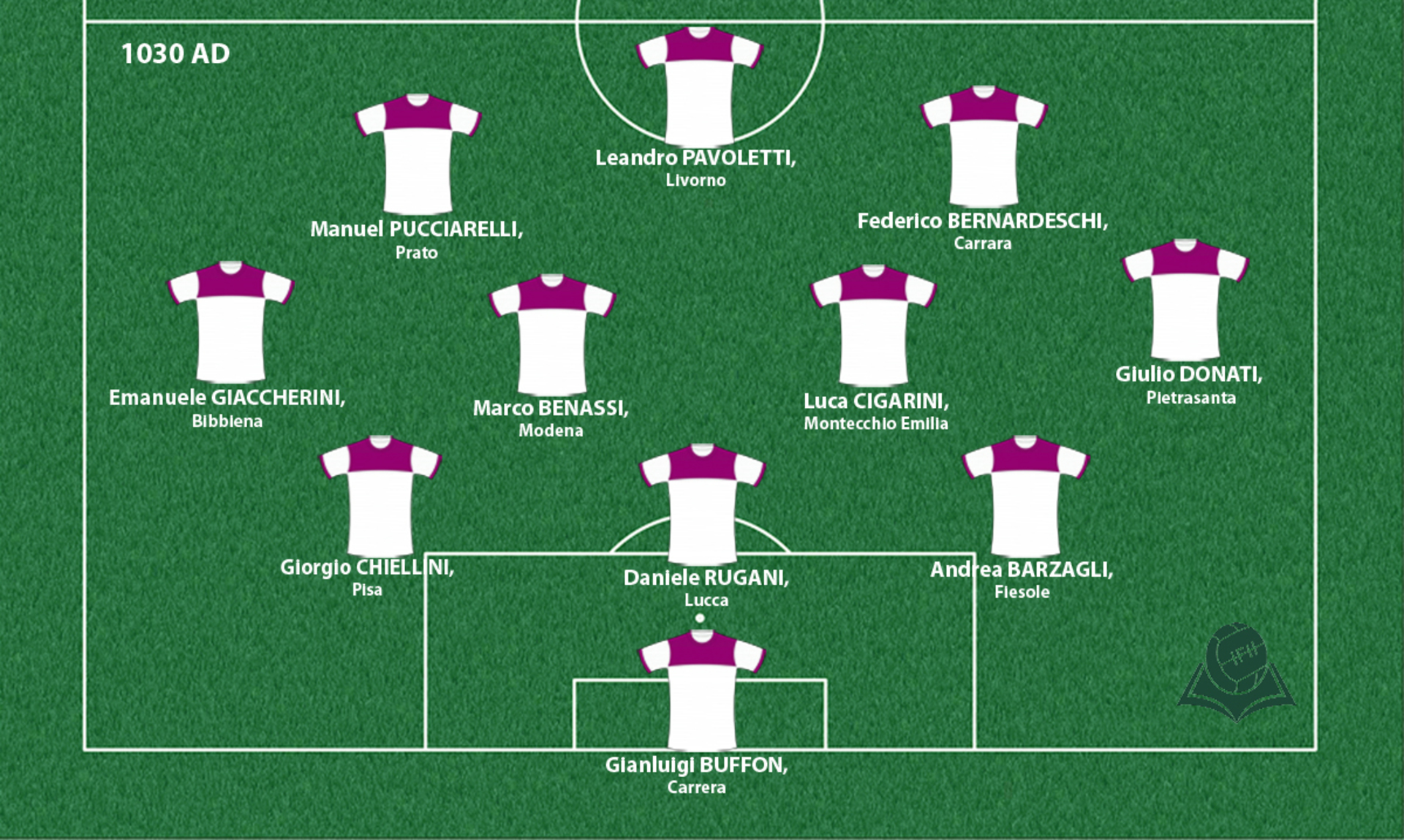The March of Tuscany
The March of Tuscany was established by Francia rulers at the southern parts of their Empire by the beginning of 9th century. Later it become southern military frontier of (Holy) Roman Empire.

Coat of arms

Shirt
| Position | First name | Last name | Mjesto rođenja | Like | Dislike | |
|---|---|---|---|---|---|---|
| GK | Emiliano | VIVIANO | Fiesole |
0 |
0 |
|
| GK | Francesco | BARDI | Livorno |
0 |
0 |
|
| GK | Gianluigi | BUFFON | Carrera |
18 |
0 |
|
| DC | Alex | FERRARI | Modena |
2 |
0 |
|
| DC | Andrea | MASIELLO | Viareggio |
2 |
0 |
|
| DC | Gabriele | ANGELLA | Florence |
1 |
0 |
|
| DC | Giorgio | CHIELLINI | Pisa |
10 |
0 |
|
| DC | Lorenzo | TONELLI | Florence |
3 |
0 |
|
| DRC | Andrea | BARZAGLI | Fiesole |
6 |
0 |
|
| DRC | Daniele | RUGANI | Lucca |
4 |
2 |
|
| DLC | Leonardo | BLANCHARD | Grosseto |
1 |
0 |
|
| DR/MR | Cristiano | PICCINI | Florence |
2 |
0 |
|
| DR/MR | Giulio | DONATI | Pietrasanta |
2 |
0 |
|
| DR/AMR | Claud | ADJAPONG | Modena |
2 |
0 |
|
| DL/ML | Francesco | MIGLIORE | Arezzo |
2 |
0 |
|
| DC/DMC | Gianluca | MANCINI | Pontedera |
2 |
0 |
|
| MC | Leonardo | CAPEZZI | Figline Valdarno |
2 |
0 |
|
| MC | Luca | CIGARINI | Montecchio Emilia |
3 |
0 |
|
| MC | Marco | BENASSI | Modena |
2 |
0 |
|
| AMRLC | Hachim | MASTOUR | Reggio Emilia |
2 |
0 |
|
| AMRLC | Luca | SILIGARDI | Corregio |
2 |
0 |
|
| MRL | Emanuele | GIACCHERINI | Bibbiena |
4 |
0 |
|
| AMRL | Federico | DI FRANCESCO | Pisa |
2 |
0 |
|
| AMRL/SS | Federico | BERNARDESCHI | Carrara |
7 |
1 |
|
| SS/AMRL | Alessandro | DIAMANTI | Prato |
2 |
0 |
|
| SS/AMRL | Diego | FABBRINI | San Giuliano Terme |
2 |
0 |
|
| SS/FC | Manuel | PUCCIARELLI | Prato |
3 |
1 |
|
| FRLC | Niccolò | GIANNETTI | Siena |
2 |
0 |
|
| FC | Andrea | FAVILLI | Pisa |
2 |
1 |
|
| FC | Giampaolo | PAZZINI | Pescia |
2 |
1 |
|
| FC | Leandro | PAVOLETTI | Livorno |
3 |
1 |
(Today part of: region Tuscany, western part of region Emilia-Romagna)
A march, in broad terms, was a military unit established at the borders of a country. It served as a practice area for the military and it aimed to incorporate won areas into an empire. The name Tuscany came from the name of ancient Etruscans who populated the area. It was necessary to establish the March of Tuscany because the Papal State was located in the middle part of the Apennine peninsula and numerous cities, especially in the southern regions (Amalfi, Napoli and Gaeta) and the Adriatic coast (Ravenna, Ancona) were either independent or ruled by Byzantium. Moreover, the Doge of Venice was a duke of the Byzantine Empire, its bishop was a patriarch and the patron Mark came from the East. Saracens and later on Normans threatened from the south. Support and good relationships with the Tuscany margraves were really important for each candidate to the crown of Lombardy.
Count Canosse Boniface III was appointed Margrave of Tuscany in 1027. Even though he was an ally and supported the candidacy of Francia duke Conrad II for the Iron Crown of Lombardy, his power was so enormous that he became Conrad’s rival. Boniface’s daughter Matilda was the chief supporter of the Pope during the Investiture Controversy. After the March of Tuscany fell apart in 1115, a number of independent cities and naval republics were established. They gradually gained their independence; however, they were also involved in numerous conflicts the most power of which were Pisa and Florence.
Sources
- Giuliano PROCACCI, Povijest Talijana, Zagreb, 1996.,
- ''March of Tuscany'', https://en.wikipedia.org/wiki/March_of_Tuscany
- ''Marka'', http://www.enciklopedija.hr/Natuknica.aspx?ID=38980
- ''Tuscany'', http://www.britannica.com/place/Tuscany
- GRB: https://commons.wikimedia.org/wiki/File:FlorenceCoA.svg
